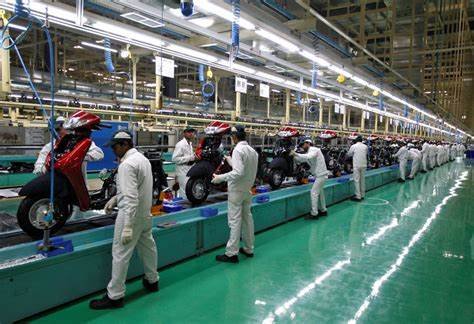India has officially surpassed China to become the world’s largest two-wheeler market, according to a recent report by Counterpoint Research. This transition, reflecting India’s growing automotive ecosystem and changing consumer preferences, marks a significant milestone in both nations’ economic trajectories and highlights the importance of two-wheelers in India’s mobility landscape.
A Shift in Market Dynamics
The Counterpoint Research report reveals that in 2023, India accounted for approximately 23 million units sold, compared to China’s 21 million units. This shift can be attributed to several factors, including urbanization, rising incomes, and changing transportation needs among the Indian populace. The demand for affordable and efficient commuting options has led to a surge in two-wheeler purchases, particularly in semi-urban and rural areas.
With a population exceeding 1.4 billion, India has long been viewed as a potential giant in the automotive industry. However, the country’s two-wheeler market has seen exponential growth over the past few years, driven by factors such as increased urban mobility needs, affordability of two-wheelers, and the proliferation of e-commerce and delivery services. The two-wheeler segment has also benefited from governmental initiatives aimed at promoting electric vehicles (EVs), which are becoming increasingly popular among environmentally conscious consumers.
The Role of E-commerce and Gig Economy
The rise of the gig economy has further fueled the demand for two-wheelers. With the growth of delivery services, food apps, and ride-sharing platforms, many individuals have turned to two-wheelers as their primary means of income generation. The ease of maneuverability in congested urban areas and the relatively low cost of ownership make two-wheelers an attractive option for many.
Moreover, the trend towards e-commerce has increased the need for quick delivery solutions, prompting companies to hire more two-wheeler riders. As a result, many consumers are now considering two-wheelers not just for personal use but as a viable economic opportunity.
The Impact of Urbanization and Infrastructure Development
Urbanization is another significant factor contributing to the booming two-wheeler market in India. With more people migrating to cities in search of better job opportunities and living standards, the demand for efficient transportation options has surged. Two-wheelers provide a convenient solution to navigate traffic congestion, especially in densely populated urban areas where larger vehicles may struggle to operate.
Additionally, ongoing investments in infrastructure development, such as better road connectivity and dedicated lanes for two-wheelers, have made it easier and safer for individuals to opt for two-wheeler transportation. The government’s push for improved infrastructure further enhances the appeal of two-wheelers as a primary mode of transport.
The Electric Revolution
As the world moves towards sustainability, India’s two-wheeler market is also experiencing a shift towards electric vehicles. The government’s initiatives to promote electric mobility, including subsidies for electric two-wheelers and the establishment of charging infrastructure, are encouraging manufacturers to innovate and expand their electric vehicle offerings. Several homegrown and international manufacturers are now competing to capture this emerging market, producing electric scooters and bikes tailored to Indian consumers’ needs.
Counterpoint Research predicts that electric two-wheelers will constitute a significant portion of the market in the coming years, aligning with global sustainability trends and consumer preferences for green mobility solutions. This transition not only supports environmental goals but also creates new jobs in manufacturing, service, and infrastructure development.
Challenges Ahead
Despite the promising outlook, the Indian two-wheeler market faces challenges, including fluctuating raw material prices, regulatory hurdles, and the need for improved safety measures. Additionally, the competition between manufacturers is intensifying, with numerous players vying for market share. Companies must focus on innovation, quality, and customer service to differentiate themselves in this competitive landscape.
Moreover, addressing safety concerns is paramount. With rising two-wheeler ownership, traffic accidents and fatalities have also increased. The government and manufacturers must prioritize safety features in two-wheelers, along with public awareness campaigns to promote safe riding practices.
India’s ascension to the status of the world’s largest two-wheeler market is not just a numerical victory; it represents a broader narrative of economic growth, changing consumer behavior, and the push towards sustainable mobility. As India continues to develop its automotive sector, it will be crucial for stakeholders—ranging from manufacturers and policymakers to consumers—to work collaboratively to address challenges and harness the full potential of this burgeoning market. This milestone not only reaffirms India’s growing influence in the global automotive landscape but also sets the stage for an exciting future in mobility innovation.

